India
India’s Strategic Moves to Safeguard Exports Amid US Tariff Threats
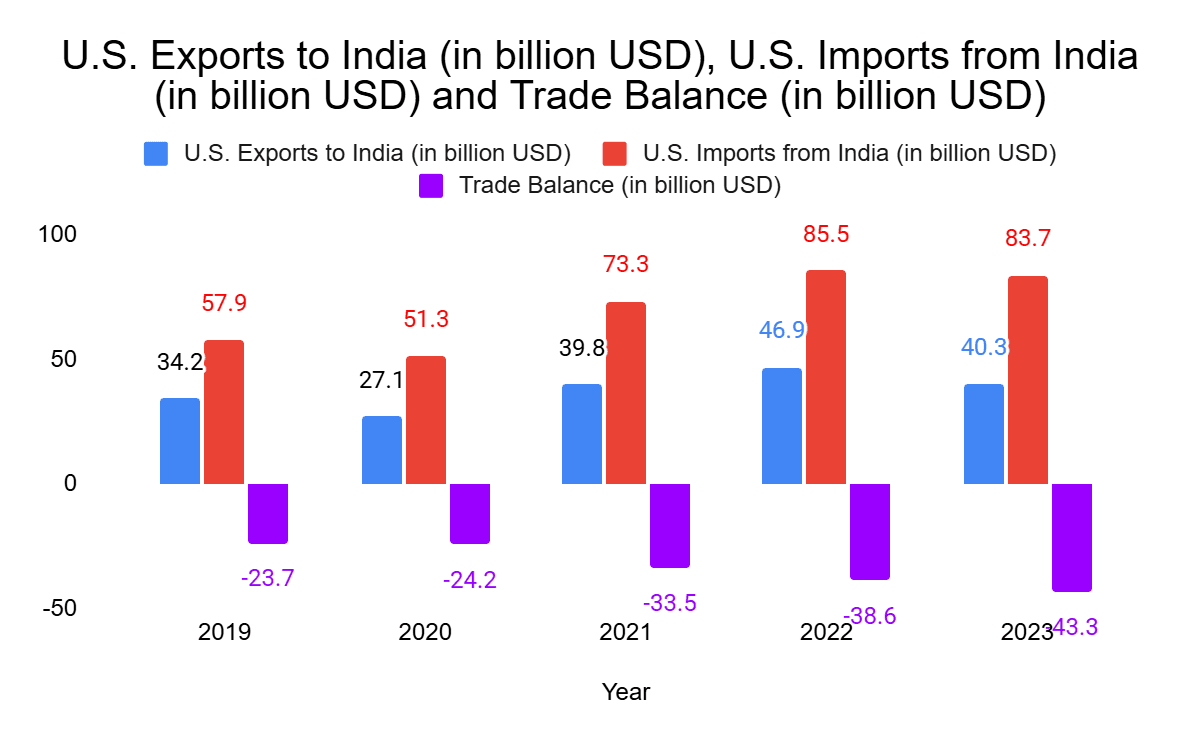
Contents
Introduction
The global trade landscape is currently characterized by a multitude of challenges, particularly for countries like India that rely heavily on exports. Recently, the specter of potential tariffs imposed by the United States has added an extra layer of complexity for Indian exporters. As one of the largest economies in the world, the US plays a critical role in international trade and its tariff policies can significantly impact other countries’ economic dynamics.
India’s relationship with the US has undergone various phases, oscillating between cooperation and contention, particularly in the sphere of trade. Historically, the two nations have engaged in extensive trade agreements, aimed at enhancing mutual economic growth and development. However, recent tensions arising from trade imbalances and protectionist policies have spurred concerns among Indian exporters. Tariffs, in particular, threaten to disrupt established supply chains, inflate costs, and ultimately hinder India’s export potential.
As a nation with a diverse range of export goods — from textiles to technology — India is especially vulnerable to changes in US trade policy. The potential imposition of tariffs could result in increased prices for Indian products in the US market, leading to a decrease in demand. This situation places Indian exporters in a precarious position, forcing them to rethink their strategies and find innovative ways to maintain competitiveness. The strategic moves undertaken by the Indian government and exporters to navigate these challenges will be pivotal in safeguarding India’s export interests.
In this context, understanding the implications of US tariffs on Indian exports is essential for grasping the broader dynamics of international trade. The ensuing sections will delve into specific strategies that India may implement to mitigate these threats and bolster its position in the global trade arena.
Understanding the Tariff Threat
The United States has been increasingly employing tariffs as a tool for trade negotiations, targeting various goods from diverse countries, including India. Recent threats of tariffs have predominantly focused on sectors such as textiles, agriculture, and electronics. The rationale behind such measures is often rooted in the perception of unfair trade practices that disadvantage American industries. These tariffs, designed to level the playing field, aim to protect local jobs and encourage domestic production.
For Indian exporters, the implications of these tariff threats are profound. Sectors such as textiles, which significantly contribute to India’s export economy, could face reduced competitiveness in the U.S. market if tariffs are implemented. Such trade barriers can lead to increased costs for Indian manufacturers, ultimately resulting in rising prices for U.S. consumers and diminishing demand for imported products. Moreover, the electronics sector, which has been witnessing substantial growth, could also be adversely affected by potential tariffs, as U.S. companies may seek alternative sourcing options to avoid increased costs.
In response to these challenges, Indian exporters are likely to adjust their strategies strategically. This may include diversifying their markets beyond the U.S. and increasing focus on countries that are more favorable concerning trade policies. Furthermore, enhancing product quality and innovation can help maintain competitiveness while navigating tariff impacts. Establishing stronger bilateral relationships with other economies can also serve as a buffer against reliance on a single market. While the threat of U.S. tariffs continues to loom, the resilience of Indian exporters will be tested as they adapt to the evolving trade landscape.
Governmental Responses and Strategies
In light of escalating tariff threats from the United States, the Indian government is undertaking a series of strategic initiatives to protect its export sectors. Finance Minister Nirmala Sitharaman has been at the forefront of these efforts, demonstrating a proactive approach to mitigate adverse effects on Indian exporters. One significant aspect of the government’s strategy is the formulation of policy changes aimed at sustaining and enhancing the competitiveness of Indian goods in international markets.
Among the actions being considered, the government is evaluating potential revisions to existing export policies. These modifications may include increasing the financial incentives offered to exporters, particularly in sectors severely vulnerable to tariff increases, such as textiles, agriculture, and electronics. Enhanced financial support can act as a critical buffer against the challenges posed by higher trading costs in key international markets.
Moreover, negotiations with the US government and trade bodies are intensifying. Indian officials are engaging in diplomatic discussions to advocate for a fair trade environment that fosters mutual growth and minimizes the adverse ramifications of unilateral tariff hikes. This diplomatic dialogue aims not only to address immediate concerns but also to build a more resilient trade framework that could withstand future trade fluctuations.
In addition to these strategies, the government is also promoting diversification of export markets. By encouraging exporters to explore alternative markets beyond traditional partners, India aims to reduce dependency on markets that may be influenced by tariff changes. This strategic pivot could potentially open new avenues for Indian products and services, fostering a more robust and sustainable export landscape.
In summary, the Indian government’s response to the US tariff threats encompasses a multi-faceted strategy involving policy adjustments, diplomatic negotiations, and market diversification efforts. These initiatives are crucial in not only preserving current export levels but also ensuring long-term growth and stability in India’s global trade engagements.
Impact on Key Export Sectors
The potential imposition of tariffs by the United States poses significant risks to various export sectors in India, particularly textiles, pharmaceuticals, and technology. These sectors represent pillars of India’s export economy, accounting for a large share of the country’s foreign exchange earnings. For example, the textile sector, which includes garments, home textiles, and technical textiles, contributes approximately $40 billion annually to India’s total exports. With US tariffs potentially escalating to 25%, Indian exporters could experience a drastic reduction in competitiveness, leading to a noteworthy decline in export volume and revenue.
Similarly, the pharmaceutical industry, valued at around $24 billion in exports, is another sector that faces considerable challenges. This sector relies heavily on the US market, its largest importer. Any tariff increase could hinder access to the market, impacting the supply chains of essential medicines and generic drugs. As a result, pharmaceutical companies may struggle to maintain their market share and financial stability, possibly leading to layoffs and reduced investment in innovation.
Furthermore, the technology sector, which encompasses information technology services and software, is equally at risk. With a robust export value close to $100 billion, this sector is crucial for India’s economy. Increased tariffs could deter US companies from outsourcing services or purchasing software from Indian firms, ultimately shrinking their revenue streams. In light of these potential challenges, Indian exporters might explore various strategies to mitigate the impact of tariffs. Diversifying export markets, enhancing product value, and focusing on free trade agreements with other nations could provide alternative pathways for sustaining growth.
Challenges Faced by Exporters in India
Indian exporters encounter a myriad of challenges that extend beyond the looming threats of tariffs imposed by the United States. One of the primary issues is the disruption of supply chains, which has become increasingly evident in recent years. Factors such as global political unrest, pandemic-induced constraints, and natural disasters have led to significant delays in the sourcing of raw materials and components essential for production. This unpredictability not only affects the timely delivery of products but also escalates operational costs, thereby impacting the overall profitability of exports.
Logistical challenges further compound these issues. India’s vast geography and diverse infrastructure capabilities often result in inefficiencies in transportation and warehousing. Ports, in particular, are frequently overwhelmed, leading to congestion that delays shipments. Custom procedures can also be cumbersome, adding additional time and complexity to the export process. Efficient logistics are crucial for maintaining competitiveness in the global market, and any disruptions can spell serious consequences for Indian exporters attempting to adhere to tight delivery schedules.
Additionally, exporters are increasingly vulnerable to fluctuations in currency exchange rates. As the Indian Rupee experiences volatility against major currencies, the profit margins on international transactions may be significantly affected. These currency dynamics can deter potential buyers and create an unfavorable environment for contract negotiations. The cumulative impact of these challenges creates a complex scenario for exporters, making it essential for them to develop robust strategies to mitigate risks and maintain market access amidst various global pressures.
Strategies for Diversifying Markets
In light of the potential tariff threats posed by the United States, Indian exporters must adopt strategies to diversify their markets effectively. Relying heavily on the US market can expose exporters to significant risks, so expanding into emerging markets in Europe, Asia, and Africa can mitigate these vulnerabilities.
Europe represents a substantial opportunity for Indian exports, particularly in sectors such as textiles, pharmaceuticals, and information technology. The European Union’s demand for sustainable products positions Indian manufacturers to capitalize on eco-friendly innovations. Exporters are advised to understand local regulations and to tailor their offerings to meet European standards and consumer preferences. Market research and partnerships with local entities can further facilitate smoother entry into this diverse market.
Asia, with its rapidly growing economies, presents another fertile ground for Indian exporters. Countries like Vietnam, Indonesia, and the Philippines offer both consumer markets and manufacturing potential. As regional trade agreements such as the Regional Comprehensive Economic Partnership (RCEP) take shape, Indian exporters can leverage these accords to enhance their market presence. The diversification into Asian markets should be complemented by a robust distribution strategy to navigate the varying logistics challenges across the region.
Africa is also emerging as a significant market for Indian goods, driven by its youthful population and increasing urbanization. India has strong trade ties with several African countries, particularly in sectors like agriculture, healthcare, and IT. Understanding local contexts and collaborating with African businesses can establish profitable partnerships. Exporters should be aware of each country’s unique economic landscape and cultural nuances to ensure suitable market adaptation.
Ultimately, diversifying markets demands a well-researched approach, considering regional demands, regulations, and consumer preferences. By targeting Europe, Asia, and Africa methodically, Indian exporters can create a balanced portfolio that reduces reliance on the US market, thereby ensuring sustainable growth and stability in an ever-changing global economy.
Role of Trade Agreements
Trade agreements play a crucial role in shaping the landscape of international commerce, particularly for countries like India that are facing tariff threats from major economies such as the United States. Bilateral and multilateral trade agreements can serve as effective tools for enhancing India’s export potential while countering the adverse effects of rising tariffs. These agreements not only facilitate smoother trade by reducing tariffs and quota restrictions but also promote cooperation between nations, encouraging a framework conducive to increased market access.
Bilateral trade agreements, which involve two countries, allow India to negotiate terms specifically tailored to its economic needs and export capabilities. For instance, India’s efforts to establish or enhance trade agreements with nations across Southeast Asia and Europe have been pivotal. Such partnerships enable Indian exporters to benefit from lowered tariffs, thus making their goods more competitive internationally. Additionally, by engaging in preferential trade agreements, India can secure more favorable conditions under which its products are marketed, mitigating the impact of US tariffs on key Indian exports.
On a broader spectrum, multilateral trade agreements, like those facilitated through organizations such as the World Trade Organization (WTO), can further bolster India’s position in global trade. These frameworks promote non-discriminatory trading practices among member countries, allowing India to enhance its appeal without being subject to unilateral tariff threats. Participation in such agreements not only strengthens India’s export base but also enhances diplomatic relationships, providing a united front to address trade challenges.
In light of these dynamics, it is evident that leveraging existing or potential trade agreements is essential for India to safeguard its export interests amidst US tariff threats. The strategic utilization of these agreements will not only help mitigate the challenges posed by tariffs but also pave the way for India to solidify its position in the global trade arena.
Future Prospects for Indian Exports
The current atmosphere surrounding international trade, especially in light of US tariff threats, presents both challenges and opportunities for Indian exports. As the world’s fifth-largest economy, India’s export sector has the potential to navigate these turbulent waters through strategic adjustments and enhancements. A thorough examination of the potential outcomes reveals both optimistic and pessimistic scenarios that could shape the future of Indian exports.
Also read : The Need of the Hour: Annamalai Defends BJP’s Three-Language Policy
On the optimistic front, India could leverage the situation to bolster its trade relationships with other countries. In response to US tariffs on specific goods, India may prioritize bilateral and multilateral trade agreements with other nations seeking to diversify their supply chains. This shift may lead to increased market access for Indian products in regions like Southeast Asia, Africa, and Europe. Enhanced diplomatic efforts could further strengthen Indian exports by showcasing the quality and competitiveness of Indian goods, potentially resulting in higher demand and increasing the overall trade volume.
Conversely, the pessimistic outlook highlights the potential repercussions of prolonged trade tensions. If US tariffs remain in place or are escalated, Indian exporters could face hurdles, particularly in sectors heavily reliant on the US market. Goods such as textiles, machinery, and agriculture may encounter reduced competitiveness, leading to a potential decline in export volumes. This could force Indian businesses to absorb the cost implications of tariffs, ultimately affecting their profitability and growth prospects.
Moreover, a lack of timely and effective government intervention could exacerbate the situation. Potential delays in policy responses or inadequate support structures may hinder exporters from adapting swiftly to changing market dynamics. Thus, while the future of Indian exports holds possibilities for growth, it is crucial for stakeholders to remain vigilant and proactive in their strategies to mitigate the impacts of external trade pressures.
Summary
In summary, the ongoing US tariff threats have prompted India to adopt a multifaceted strategy to safeguard its export sector. The challenges presented by potential trade barriers necessitate a proactive response from both the government and individual exporters. Through initiatives such as diversifying export markets and enhancing the quality of products, India aims to mitigate the impact of tariff policies that could unfairly advantage competitors while disadvantaging local exporters.
Furthermore, India’s strategy encompasses building stronger bilateral trade relations, particularly with nations that share similar trade interests, thereby increasing resilience against unilateral trade measures. Investments in infrastructure and technology also play a critical role in bolstering competitiveness, allowing exporters to deliver higher-value goods more efficiently. Such infrastructural advancements are essential for maintaining a robust export network that can withstand the fluctuations of global trade dynamics.
The significance of adaptability cannot be overstated in this evolving landscape. As the global economic environment shifts and nations reevaluate their trade policies, India’s commitment to strategic export management will be crucial in ensuring sustained growth. By fostering an environment that encourages continued innovation and market exploration, India can enhance its position on the global trade stage despite external pressures.
Ultimately, the combination of strategic government initiatives and the proactive measures taken by exporters will determine how effectively India can navigate the complexities introduced by US tariff threats. It is through this concerted effort that India hopes to safeguard its exports and continue contributing positively to the global trade framework.
Education
Sahodaya-Collaboration-Summit-Jaipur-educational-transformation
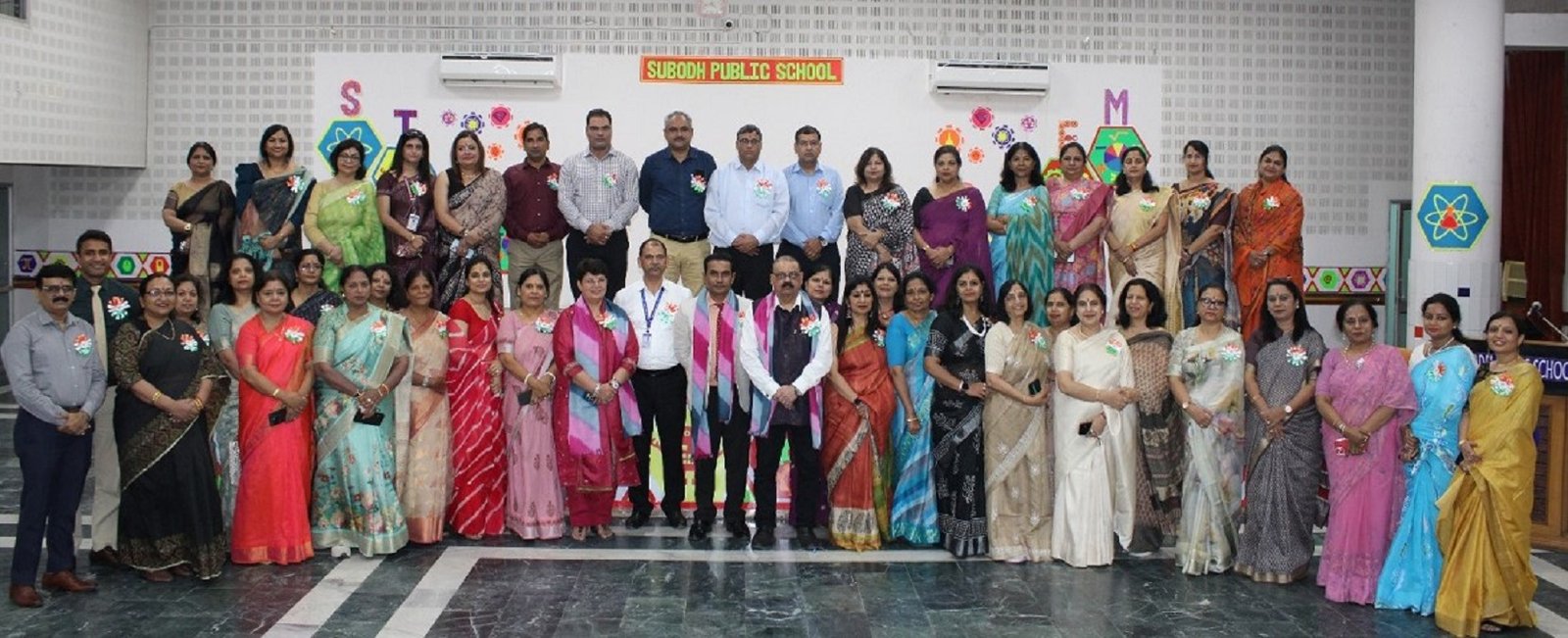
Contents
Jaipur, Aug.25,2025:The Sahodaya Collaboration Summit turned Subodh Public School into a hub of collaborative energy. Educators from across the Jaipur Sahodaya network—including
Sahodaya Collaboration Summit began with urgency and optimism at the opening of the meeting — an emblem of partnership, leadership, and educational vision. Held on August 23, 2025, at Subodh Public School, Rambagh, Jaipur, this momentous gathering marked a renewed commitment to collective growth among member schools of the Jaipur Sahodaya Schools Complex.

The Vibrant Gathering at Jaipur Sahodaya
The Sahodaya Collaboration Summit turned Subodh Public School into a hub of collaborative energy. Educators from across the Jaipur Sahodaya network—including principals, secretaries, and communication leads—gathered to share strategies for innovation, overcoming challenges, and nurturing academic excellence together.
In these lively sessions, leaders candidly discussed membership roles, social justice through equal educational access, and how to scale up imaginative pedagogies. The ambiance was one of unity, rooted in shared mission and rising higher together.

Leadership That Inspired
President’s Vision
The meeting honored Shri Ashok Vaid Ji, whose vision and steady guidance elevated the summit. With thoughtful insight, he facilitated reflective conversations and steered the group toward purposeful planning.
Secretary & Joint Secretary’s Support
A heartfelt thank-you was extended to Shri Puneet Tyagi Ji, the dynamic General Secretary whose unwavering encouragement kept the energy high, and to Smt. Manju Khosla Ji, the graceful Joint Secretary, whose goodwill and supportive presence added warmth to the summit’s mood.
Transparent Elections and New Office Bearers
In a testament to both fairness and collaboration, the Sahodaya Collaboration Summit concluded with the transparent election of new office bearers. Candidates were thoughtfully selected—and the vote was conducted with sincerity and respect.
The newly appointed team includes:
- Dr. Sanjay Parashar – Vice President
- Dr. Sandeep Kulhari – Treasurer
- Ms. Karuna Nagpal – Executive Member
Their induction reflects the summit’s commitment to energizing leadership with fresh perspectives.
What the New Team Brings to the Table
Each new member comes equipped with a wealth of talent and promise:
- As Vice President, Dr. Sanjay Parashar is expected to amplify student-centric policies and help drive pedagogical innovation.
- Treasurer Dr. Sandeep Kulhari brings fiscal stewardship and operational discipline to enhance resource management.
- Ms. Karuna Nagpal, as Executive Member, will ensure the continued development of collaborative initiatives that span the network.
Together, this team embodies the synergy and trust that the Sahodaya ethos stands for.
Sahodaya Collaboration Summit’s Broader Impacts
This Summit wasn’t just a meeting—it was a dynamic catalyst for change. The Sahodaya Collaboration Summit motivates member schools to:
- Exchange best practices—ranging from pedagogy to community engagement.
- Develop joint programming—such as workshops, seminars, and student activities like debates, exhibitions, and sports meets.
- Advocate for inclusive education—ensuring equitable access for all segments of society, aligned with CBSE’s mission since Sahodaya’s inception.
With energized leadership and a spirit of collaboration, the summit has set the stage for what’s next:
- Shared Action Plans across schools for curricular excellence and teacher development.
- Inter-school activities, including initiating upcoming workshops, exhibitions, and seminars.
- Strengthened engagement with CBSE guidelines, NEP 2020 integration, and national education goals.
The Sahodaya Collaboration Summit at Jaipur stands as a testament to collective resolve, leadership, and community-focused transformation. As schools continue to learn, unlearn, and relearn through shared wisdom, the future of education in Jaipur shines brighter than ever.
Business
India-Russia Oil Dispute laid bare — 7 bold truths as Jaishankar slams U.S. accusations at the World Leaders Forum
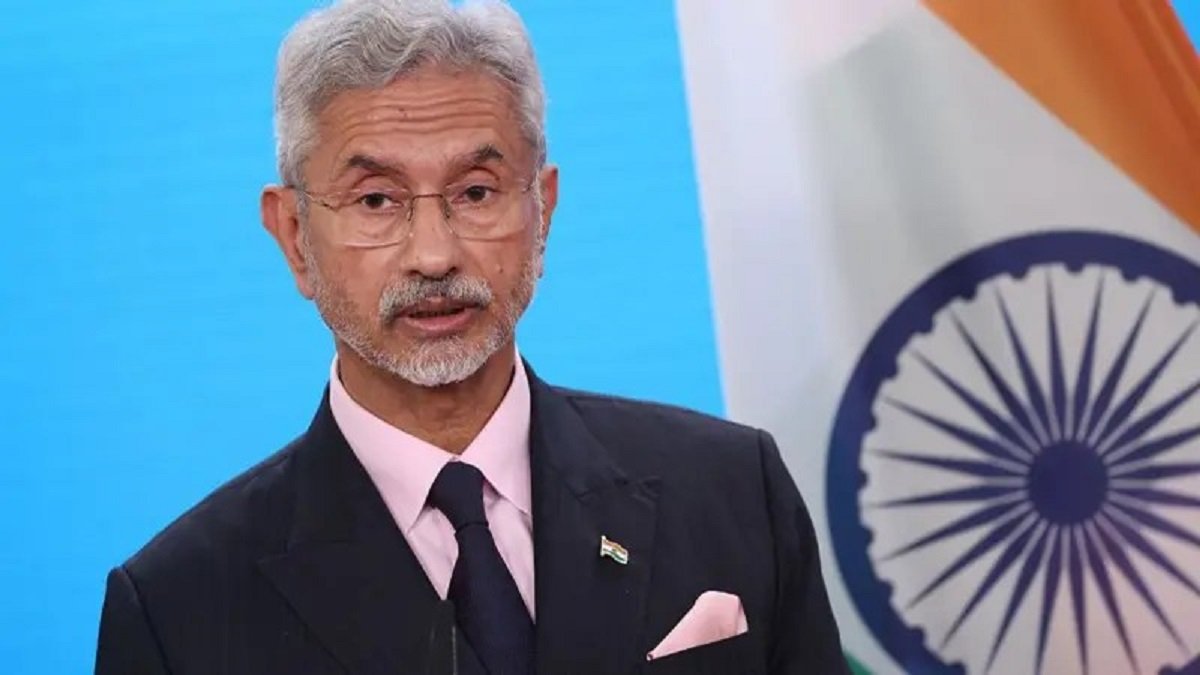
Contents
New Delhi, Aug.23,2025:Jaishankar’s pointed comeback—“If you don’t like it, don’t buy it”—served as a powerful assertion of India’s right to independent trade decisions
India-Russia Oil Dispute: Unpacking the Buzz
The India-Russia Oil Dispute erupted into the spotlight when U.S. officials accused India of profiting from Russian oil—alleging that India had become a refining “laundromat,” indirectly funding Russia amid the Ukraine war. At the Economic Times World Leaders Forum 2025, External Affairs Minister S. Jaishankar responded forcefully, defending India’s sovereign energy choices.
“If you don’t like it, don’t buy it” — Sovereignty First
Jaishankar’s pointed comeback—“If you don’t like it, don’t buy it”—served as a powerful assertion of India’s right to independent trade decisions. He criticized those in a “pro-business American administration” for meddling in India’s affairs.
Energy Strategy Is Global, Not Just Indian
Beyond national priorities, Jaishankar emphasized that India’s Russian oil purchases also contributed to global energy stability. In 2022, amidst surging prices, allowing India to import Russian crude helped calm markets worldwide.
Tariffs and Trade Talks — India Holds the Red Lines
With the U.S. imposing up to 50% tariffs on Indian goods tied to energy policy, Jaishankar reiterated that while trade discussions with Washington continue, India will not compromise on protecting farmers, small producers, and its strategic autonomy.
Double Standards—Not Just About India
Jaishankar called out the hypocrisy in targeting India alone. Critics have ignored that larger energy importers, including China and the EU, have not faced similar reproach for their Russian oil purchases.
No Third-Party in Indo-Pak Ceasefire
Amid U.S. claims of mediating the 2025 India–Pakistan ceasefire, Jaishankar made it clear that India rejects any third-party intervention. A national consensus has existed for over 50 years—India handles its ties with Pakistan bilaterally.
Operation Sindoor and Direct Military De-escalation
Regarding Operation Sindoor, launched after the April 22 Pahalgam attack, Jaishankar confirmed that the cessation of hostilities resulted directly from military-to-military discussions. There were no links to trade or external pressure.
U.S. Ceasefire Claims and Indian Rebuttal
While the U.S. touted its role in brokering the ceasefire—via President Trump, VP Vance, and Secretary Rubio—India maintained the outcome was reached bilaterally and without diplomatic backdoor deals.
What Lies Ahead for the India-Russia Oil Dispute?
The India-Russia Oil Dispute unveils deeper geopolitical crosscurrents. It reflects India’s balancing act—asserting sovereignty over energy choices while defending national interests in the face of mounting foreign pressure. Simultaneously, India’s unwavering stance on ceasefire diplomacy reinforces its preference for autonomy over dependency. As global tensions simmer and trade spat heats up, India’s resolve and strategic clarity remain unmistakable.
India
India-Pakistan Cricket Objection: Sanjay Raut’s Unmissable Letter

Contents
Mumbai, Aug.23,2025:In his letter, Sanjay Raut asked: “Will blood and cricket flow together?” He highlighted that despite “Operation Sindoor” still being unfinished
India-Pakistan Cricket Objection
The India-Pakistan Cricket Objection surfaced dramatically when Shiv Sena (UBT) MP Sanjay Raut sent a strongly worded letter to Prime Minister Narendra Modi in late August 2025. He protested India’s participation in the Asia Cup match scheduled against Pakistan on September 14, 2025, in Dubai.
The Letter: Will Blood and Cricket Flow Together?
In his letter, Sanjay Raut asked: “Will blood and cricket flow together?” He highlighted that despite “Operation Sindoor” still being unfinished and the wounds from the Pahalgam terror attack not healed, India agreeing to such a match is “painful and insensitive.”
He tagged PM Modi, Union Home Minister Amit Shah, and the BCCI, publicly criticizing the government for granting clearance.
Operation Sindoor and Ongoing Threats
Raut emphasized that Operation Sindoor, India’s ongoing counter-terrorism campaign, continues to pose threats—suggesting that sporting ties with Pakistan now strain credibility in India’s security stances.
Martyr Families and Emotional Costs
Citing the Pahalgam terror attack—where 26 people were killed, many leaving behind grieving families—Raut questioned whether their pain was respected. He called the match a “sprinkling of salt on fresh wounds.”
Accusations of Political and Financial Motives
Raut cast doubt on the government’s neutrality by referencing Jay Shah, son of Home Minister Amit Shah and Secretary of the BCCI. He suggested potential politically motivated or financial interests in approving the match.
Betting, Gambling, and Governance Questions
He also raised concerns about betting and online gambling, areas where India–Pakistan matches often attract massive stakes. He hinted at involvement of political figures in these networks.
Hindutva, Patriotism, and Local Opposition
Raut argued that the match not only disrespects soldiers’ sacrifices but also undermines Hindutva and patriotism. He stated that, had the match been scheduled in Maharashtra, Shiv Sena under Bal Thackeray’s legacy would have “stopped it.”
Broader Political Reactions & External Commentary
Other political leaders echoed Raut’s objections. Aaditya Thackeray condemned the BCCI’s profit focus over national sentiment, calling it a “shameful act.”
In contrast, the Samajwadi Party branded the decision as “nothing less than shameless” and urged a boycott of the match.
What Doesn’t Play Well on the Field
The India-Pakistan Cricket Objection is not just about a match—it’s a nexus of national security, emotional wounds, political accountability, public sentiment, and ethical governance. Sanjay Raut’s letter, backed by similar protest voices, challenges the optics and implications of playing cricket with Pakistan amid ongoing cross-border tensions. The objections raised probe deep into how sports intersect with patriotism, policy, and public emotion.
Bihar
Tejashwi Yadav FIR over PM Modi comment
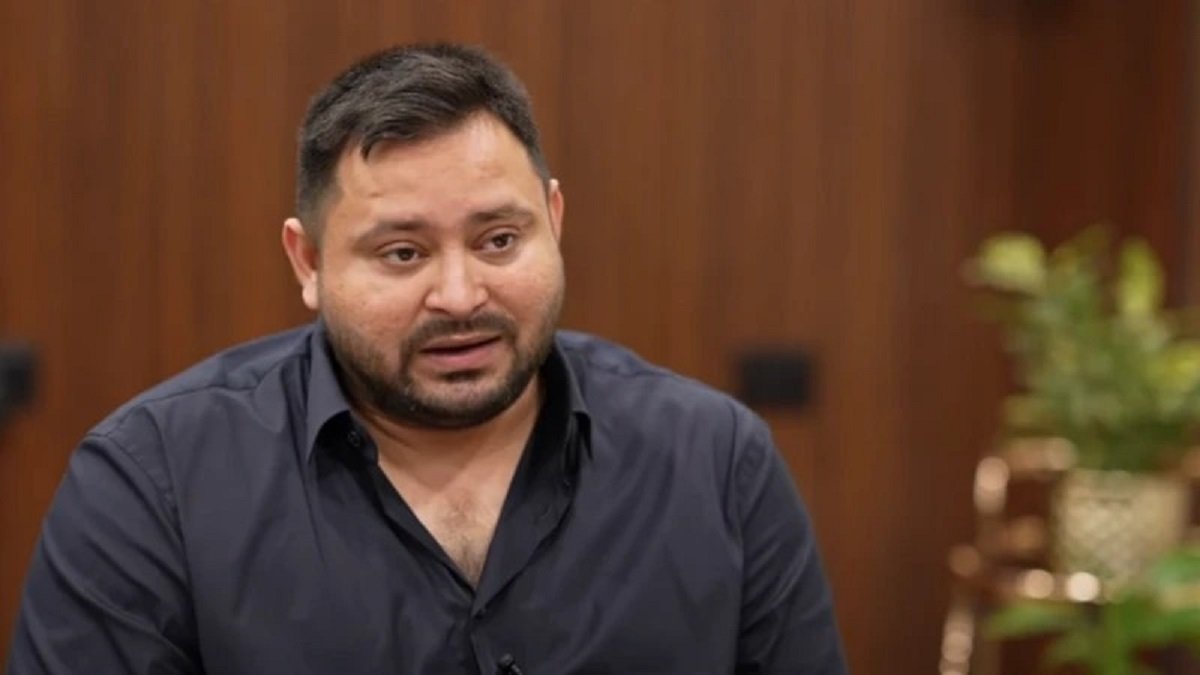
Contents
Bihar, Aug.23,2025:Tejashwi shared a cartoon on his X account depicting PM Modi as a shopkeeper running a “shop of rhetoric,” ahead of Modi’s rally in Gaya
FIR Filings in Maharashtra and UP
In Maharashtra’s Gadchiroli, a police case was registered following a complaint by local BJP MLA Milind Ramji Narote. The FIR targets RJD leader and former Bihar Deputy Chief Minister Tejashwi Yadav for allegedly derogatory remarks against Prime Minister Narendra Modi on social media platform X.
Simultaneously, in Uttar Pradesh’s Shahjahanpur, the city’s BJP unit chief, Shilpi Gupta, filed a complaint leading to another FIR against Yadav.
What Exactly Tejashwi Yadav Said
Tejashwi shared a cartoon on his X account depicting PM Modi as a shopkeeper running a “shop of rhetoric,” ahead of Modi’s rally in Gaya. The satirical image labeled the stall “famous shop of Rhetoric.” In his caption, Yadav challenged:
“Prime Minister ji, in Gaya, with a boneless tongue, you’ll erect a Himalaya of lies and rhetoric—but the justice-loving people of Bihar, like Dashrath Manjhi, will shatter these mountains of falsehoods.”.
This post triggered outrage among BJP leaders, who deemed it defamatory and divisive.
Legal Charges and Sections Invoked
In Gadchiroli, Yadav was booked under multiple provisions of the Bharatiya Nyaya Sanhita, including:
- Section 196(1)(a): Promoting ill-will between groups
- Section 196(1)(b): Acts prejudicial to harmony
- Section 356(2) & 356(3): Derogatory, repeated statements against government
- Sections 352 & 353(2): Causing public mischief and spreading disharmony via digital media.
In Shahjahanpur (UP), the FIR echoes similar accusations—indecorous comments causing “immense anger among the public”—though specific sections were not listed.
Tejashwi’s Defiant Response
Unfazed, Tejashwi Yadav dismissed the FIRs, asserting:
“Who is scared of an FIR? Saying the word ‘jumla’ (rhetoric) has also become a crime. They fear the truth. We won’t back down from speaking the truth.”
A party spokesperson added that the FIRs reflect fear of truth, emphasizing their resolve to speak out regardless of legal threats.
Political Fallout & Broader Implications
These FIRs fuel broader tensions between RJD and BJP ahead of crucial elections. Question arise over whether these are attempts to curb political criticism.
Observers note this could chill political speech if remarks—even satirical—invite legal consequences. It also raises concerns about misuse of defamation or hate-speech provisions to stifle dissent.
Opposition voices rallied, with leaders invoking historical struggles—“even if a thousand FIRs are filed… the target will be achieved”.
Tejashwi Yadav FIR over PM Modi comment underscores a politically charged crossroads: satirical speech versus legal limits, protest or provocation, regional politics or national crackdown. The coming legal proceedings may shape the tone of political discourse ahead of elections.
Accident
Uttarakhand Chamoli Cloudburst Sparks Urgent Rescue
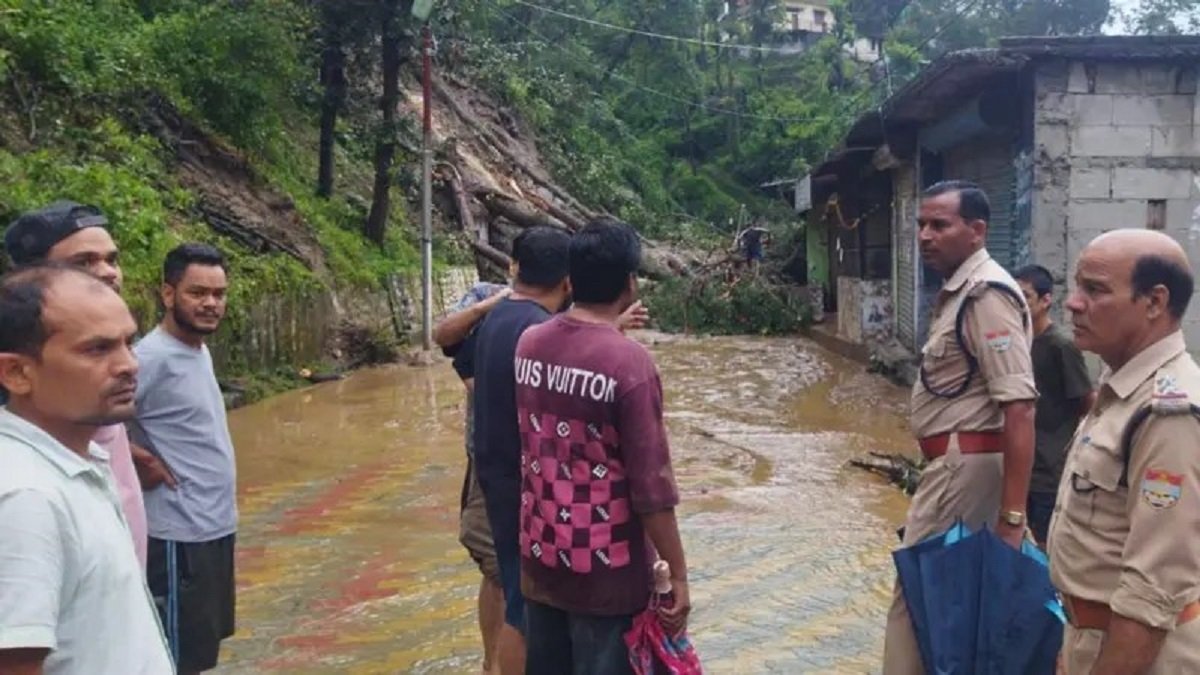
Contents
Uttarakhand, Aug.23,2025: At least two individuals remain missing—a young woman in Sagwara and a senior citizen in Chepdo—highlighting the tragic human toll. Roads like Tharali-Sagwara and Tharali-Gwaldam are blocked, schools in three development blocks suspended classes
Uttarakhand Chamoli Cloudburst Unfolds
Uttarakhand Chamoli Cloudburst struck the Tharali region late Friday night, igniting a harrowing chain of events. Debris surged into homes, markets, and critical buildings—including the SDM’s residence—leaving a trail of destruction and despair.
Extent of the Damage
The Uttarakhand Chamoli Cloudburst unleashed debris that engulfed the Tharali market and tehsil complex, burying vehicles and causing significant structural damage to shops and residences.
At least two individuals remain missing—a young woman in Sagwara and a senior citizen in Chepdo—highlighting the tragic human toll. Roads like Tharali-Sagwara and Tharali-Gwaldam are blocked, schools in three development blocks suspended classes, and relief camps have been established for displaced residents.
Rescue and Relief Efforts
Emergency responders have acted swiftly in the wake of the Uttarakhand Chamoli Cloudburst. Teams from SDRF, NDRF, the police, and the Indian Army were deployed immediately, supported by drones and search-and-rescue dogs.
Nearby relief resources such as ITBP, SSB, and NDRF units were dispatched from Gwaldam, Gauchar, and other locations. Chalking further severity, officials report vehicles entombed in mud and debris—hindering ground-level access.
Voices from the Ground
Chamoli’s District Magistrate Sandeep Tiwari warned of “a lot of damage” in the Tharali tehsil and confirmed multiple structures, including the SDM’s residence, were severely damaged.
Chief Minister Pushkar Singh Dhami expressed deep concern and relief oversight via his post on X: “…continuously monitoring the situation… praying for everyone’s safety”.
A local update from Hindi media revealed: “An elderly person and a 20-year-old girl are missing… debris reached the tehsil complex and several homes… rescue teams from SDRF, NDRF, and administration are already on site”.
Expert Perspective and Future Preparedness
This incident marks the second such calamity in Uttarakhand this August—just after the Dharali disaster in early August—suggesting a growing pattern of risky weather phenomena.
Scientists warn that rising temperatures and moisture levels are intensifying cloudburst events, particularly in mountainous regions like Uttarakhand.
Improved radar systems and upper-catchment monitoring are essential to reduce future losses in such high-risk zones.
In the face of this Uttarakhand Chamoli Cloudburst, the devastation is both physical and emotional. Homes lie in ruins, lives are unsettled, and rescue warriors race against time. Yet, amidst the crisis, hope persists—embodied by swift emergency action and heartfelt support.
Rapid data gathering, advanced weather tracking, and community preparedness are vital next steps to shield Uttarakhand’s Himalayan communities from future disasters. Read more, stay informed, and support relief efforts.
Business
Open AI-opening India office game changing move
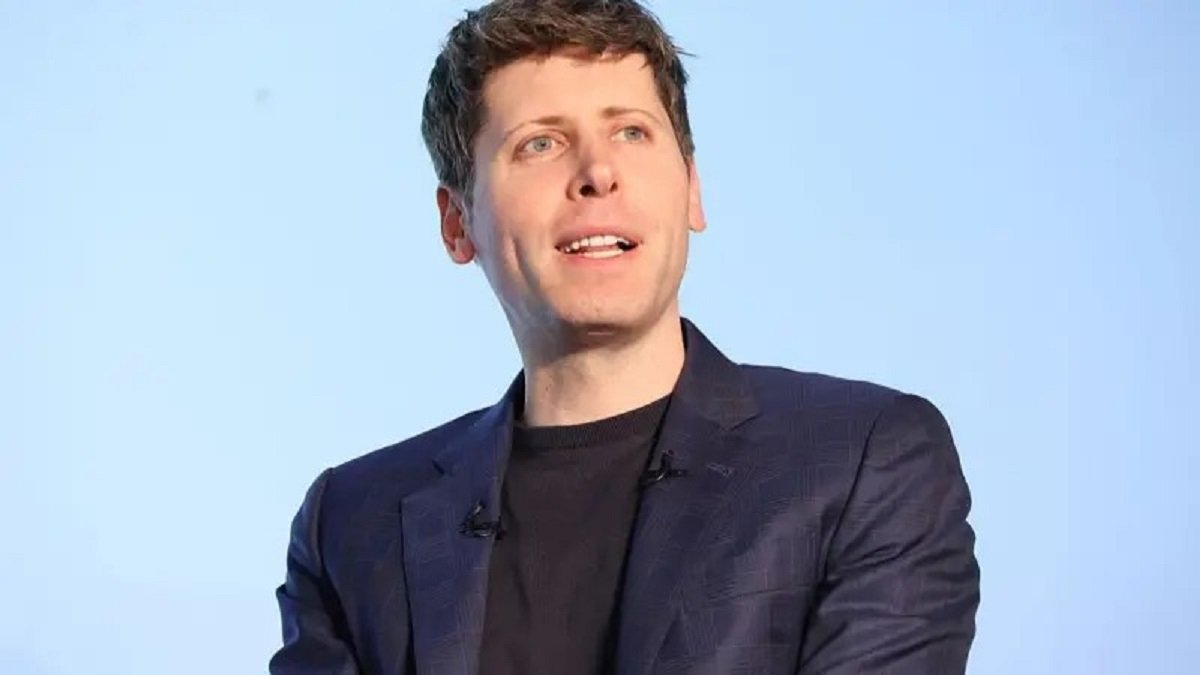
Contents
India, Aug.23,2025:India ranks as OpenAI’s second-largest market by user numbers, with weekly active ChatGPT users having roughly quadrupled in the past year. Recognizing this explosive user base, the company recently rolled out an India-specific
The Big Announcement
OpenAI opening India office was confirmed by CEO Sam Altman, who stated the company will launch its first office in New Delhi by the end of 2025. He emphasized that building a local team in India aligns with OpenAI’s commitment to making advanced AI accessible and tailored for India, and with India.
Why India Matters to OpenAI
India ranks as OpenAI’s second-largest market by user numbers, with weekly active ChatGPT users having roughly quadrupled in the past year. Recognizing this explosive user base, the company recently rolled out an India-specific, affordable ChatGPT plan for ₹399/month (approx. $4.60), aiming to expand access among nearly a billion internet users.
Local Hiring and Institutional Setup
OpenAI has legally registered its entity in India and initiated local hiring. The first set of roles includes Account Directors for Digital Natives, Large Enterprise, and Strategics, indicating focus across multiple business verticals. Pragya Misra currently leads public policy and partnerships locally, with the office slated for deepening collaborations with enterprises, developers, and academia.
Policy and Government Synergies
The move aligns with the India government’s IndiaAI Mission, aimed at democratizing AI innovation. IT Minister Ashwini Vaishnaw welcomed OpenAI’s entry, citing India’s talent, infrastructure, and regulatory backing as key enablers for AI transformation.
Competition and Regulation
Despite strong growth, the journey isn’t without challenges:
- OpenAI faces stiff competition from Google’s Gemini and Perplexity AI, both offering advanced AI features for free to attract users.
- Legal challenges persist. Media outlets and publishers allege unauthorized use of content for AI training—a claim OpenAI denies.
- Internal caution: India’s Finance Ministry has advised employees to avoid AI tools like ChatGPT over data confidentiality concerns.
What This Means for Indian AI Ecosystem
The OpenAI opening India office initiative promises:
- Localized AI services tailored to India’s linguistic, educational, and enterprise needs.
- Stronger collaboration with government, academia, and startups.
- A potential shift in regulatory discourse through local presence—making engagement more proactive.
- Acceleration of digital inclusion across demographics through affordable AI access.
The OpenAI opening India office announcement signals more than expansion—it’s a bold stride toward embedding AI in India’s innovation DNA. With localized services, deeper partnerships, and affordability at its core, OpenAI aims to empower India’s digital future, even as it navigates regulatory scrutiny and market rivalry.
Education
J&K Government Takes Over 215 Schools in a decisive action to safeguard students’ futures and uphold national law—
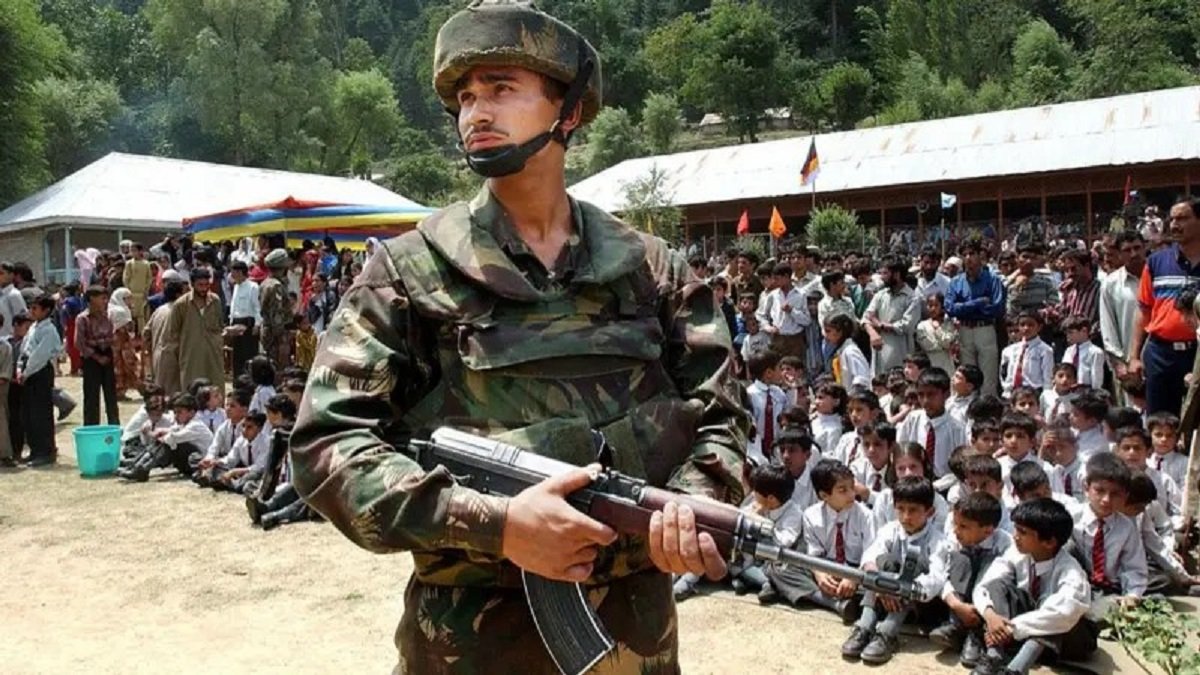
Contents
J&K, Aug.23,2025: The transition of control entails handing over the management of the 215 schools to the respective District Magistrates (DMs) or Deputy Commissioners (DCs). They are tasked with
The Decision Unveiled
In a bold, decisive move, the J&K Government Takes Over 215 Schools linked to the proscribed Jamaat-e-Islami (JeI) and its educational wing, Falah-e-Aam Trust (FAT), as outlined in an order by the J&K School Education Department on August 22, 2025.
The school managing committees were deemed invalid—either expired or flagged by intelligence agencies—and the takeover is intended to secure students’ academic futures and ensure compliance with legal standards.
Why the Takeover?
The rationale is clear to protect education and enforce law and order. Intelligence assessments uncovered direct or indirect affiliations between these schools and banned organizations, undermining governance and education delivery.
Director of the Education Department, Secretary Ram Nivas Sharma, emphasized the move was taken solely for the welfare of students, safeguarding their educational journey amid governance concerns.
Scope and Oversight
The transition of control entails handing over the management of the 215 schools to the respective District Magistrates (DMs) or Deputy Commissioners (DCs). They are tasked with forming verified new management committees and ensuring the uninterrupted, quality education of students per National Education Policy (NEP) standards.
Nearly 60,000 students and about 4,000 staff across these schools come within the ambit of this administrative overhaul.
The schools span the Kashmir Valley, with the highest numbers in North Kashmir (Baramulla, Kupwara, Bandipora), followed by South and Central regions.
Political Reactions and Disputes
The move has stoked political controversy. J&K’s Education Minister, Sakina Itoo, stated that the original plan involved delegating school oversight to nearby government school principals—not district officials. She claimed the order was altered without her knowledge.
Meanwhile, opposition leader Sajad Lone of the Peoples Conference condemned the takeover as excessive political overreach, calling it “a shameless display of servility” by the elected government. These views underline tensions between governance, administration, and political narratives.
Impact on Students and Education Quality
Despite the political turbulence, both officials and stakeholders affirm that student interests remain the central concern. The education department coordination aims to maintain academic continuity and uphold education standards across the affected schools.
Ensuring alignment with NEP norms and careful management during the transition is critical to avoid disruptions in student learning—a challenge acknowledged by authorities.
The next steps involve verifying the proposed committees and restoring operational normalcy. The DM/DCs will play a pivotal role in stabilizing governance.
Political friction, administrative overhaul, and student welfare concerns will shape the process ahead. Whether this sets a precedent for similar interventions in education management remains to be seen. The focus now is restoring trust and continuity.
In a courageous, strategic step, the J&K Government Takes Over 215 Schools to realign education with legal, security, and quality standards. Amid political friction and administrative upheaval, the focus remains unshakably on safeguarding education and protecting student futures.
Education
Subodh Public School’s inspiring Mussoorie-Kanatal journey—
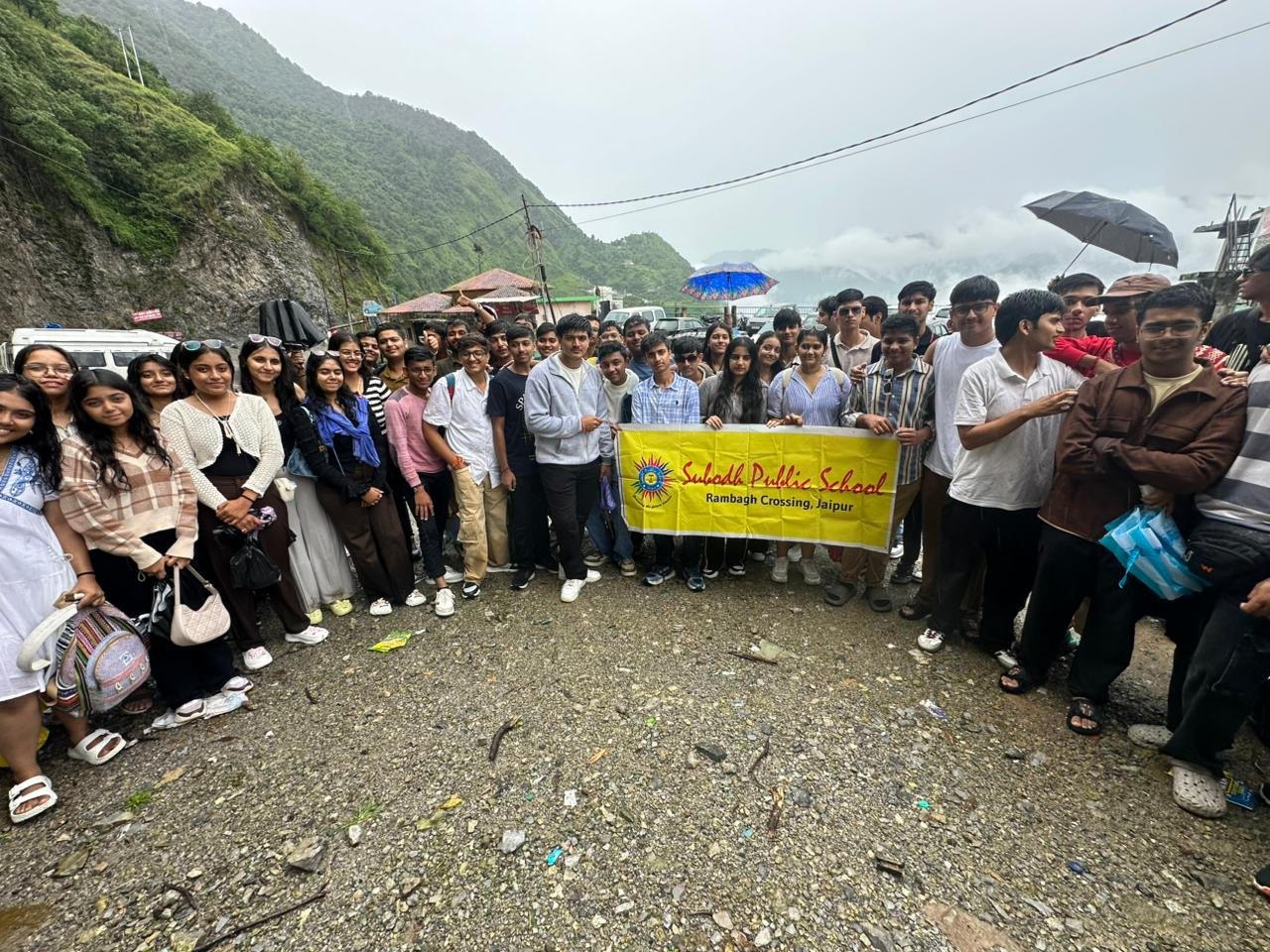
Contents
Jaipur, Aug.21,2025: The tour began with an enthusiastic caravan venturing toward the hills. Upon reaching Mussoorie, students absorbed their first educational tour highlights—
Educational Tour Highlights shone brightly as 81 Class XII students from Subodh Public School embarked on an unforgettable journey from August 14–18, 2025, exploring picturesque Mussoorie and Kanatal. Accompanied by 8 dedicated staff and 2 assistant workers, this educational tour was a fusion of scenic wonder, cultural immersion, and transformative learning.

Day-by-Day Journey & Highlights
Day 1: Arrival and First Educational Tour Highlights
The tour began with an enthusiastic caravan venturing toward the hills. Upon reaching Mussoorie, students absorbed their first educational tour highlights—from crisp mountain air to panoramic views—setting a tone of exploration and curiosity.
Day 2: Exploring Dhanaulti and Kanatal – Educational Tour Highlights Continue
Day two involved visits to Dhanaulti and Kanatal. Amid lush forests and serene landscapes, students learned about biodiversity and forest ecosystems—some of the most meaningful educational tour highlights of the trip.
Day 3: Kempty Falls and Learning Moments
On the third day, the cascading waters of Kempty Falls mesmerized students. Here, they delved into discussions on water cycle, geomorphology, and the cultural significance of Himalayan waterways—truly enriching educational tour highlights blending nature with knowledge.
Day 4: Lakes of Mussoorie – Nature as Classroom
Day four unfolded around the peaceful lakes of Mussoorie, where students reflected on environmental stewardship. The tranquil waters became more than sights—they served as living lessons and lingering educational tour highlights.
Day 5: Reflection and Farewell – Tour’s Last Educational Tour Highlights
On the final day, students revisited their favorite memories. Classroom camaraderie, guided discussions, and personal journaling across the journey capped off the final educational tour highlights, demonstrating growth and retrospection.


Learning & Team Building Beyond the Classroom
Each destination unfolded multiple educational tour highlights—from geography to ecology, peer collaboration to problem-solving. Students practiced teamwork during group hikes, dialogues with teachers about sustainable tourism, and bonded through shared discovery.
Sustainable Tourism & Cultural Connection
Beyond sightseeing, the tour emphasized respect for nature and local culture. Students were encouraged to engage responsibly, appreciate Uttarakhand’s environment, and reflect on the role of sustainable tourism—one of the most enduring educational tour highlights.
In sum, educational tour highlights such as forest studies, waterfall geology, lake ecology, and collaborative exploration transformed this trip into a profound learning expedition. Over five days, students not only enjoyed scenic vistas but also carried home lessons in nature appreciation, team spirit, and lifelong memories.
Crime
Shocking CBI Arrests 6 J&K Police: Supreme Court Orders Brutal Custodial Torture Probe
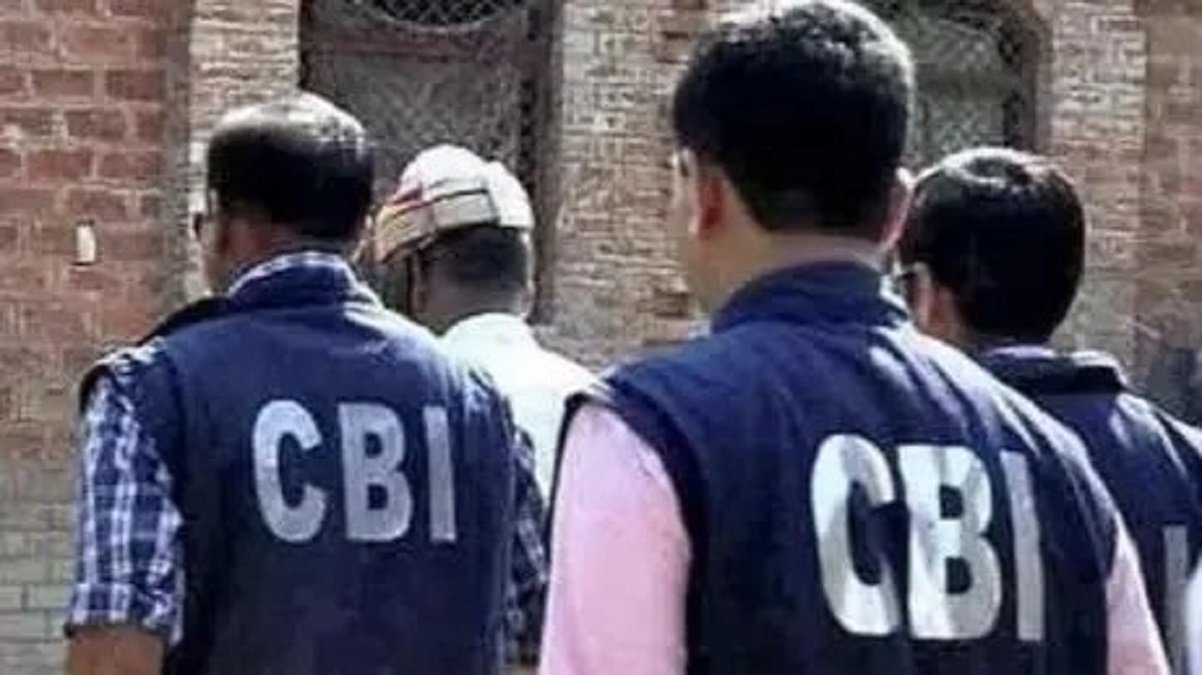
Contents
Jammu& Kashmir, Aug.21,2025:This case stands as a pivotal moment for police reform in J&K. It signals that custodial abuse—even by law enforcement—
CBI Arrests 6 J&K Police at Supreme Court’s Urgent Direction
CBI Arrests 6 J&K Police under swift Supreme Court orders, marking a rare instance of accountability within the security apparatus of Jammu & Kashmir. In a case that has shocked the nation, six officers—including a Deputy Superintendent of Police—were detained in connection with the custodial torture of a fellow officer.
The Callous Torture of Constable Khurshid Ahmad Chouhan
Constable Khurshid Ahmad Chouhan, serving in Baramulla district, was summoned in February 2023 and detained at the Joint Interrogation Centre in Kupwara. Over six harrowing days, he endured horrific abuse: electric shocks, iron rods, red chili insertion, and complete mutilation of his genitalia. The injuries—and medical findings—were so severe that the Supreme Court found them “deeply shocking to the conscience.”
What the Supreme Court Ordered, Compensation and Investigative Protocols
On July 21, 2025, the Supreme Court issued a scathing directive:
- CBI was mandated to register an FIR, arrest the accused within a month, and complete the investigation in 90 days.
- A compensation of ₹50 lakh was awarded to Chouhan, recoverable from the officers concerned.
- Detailed investigation protocols were laid out, including forensic audits, CCTV reviews, questioning of all staff, and systemic reform at the JIC.
Details of the Arrests,Who, When, and Where
CBI Arrests 6 J&K Police personnel following the Supreme Court’s instructions. Those detained include:
- DSP Aijaz Ahmad Naikoo
- Inspector Riyaz Ahmad
- Jahangir Ahmad
- Imtiyaz Ahmad
- Mohammad Younis
- Shakir Ahmad
All were posted at Kupwara’s Joint Interrogation Centre. A Special Investigation Team (SIT), led by CBI SP Subhash Chander Kundu, carried out the operation, and the accused are currently lodged in a Srinagar facility.
Systemic Issues at the Joint Interrogation Centre (JIC), Kupwara
The Supreme Court highlighted a disturbing failure of institutional integrity and justice. SC’s judgment noted how authorities attempted to flip the narrative by charging Chouhan himself with an attempt to commit suicide—an “implausible” explanation given the nature and extent of his injuries. This was seen as a deliberate cover-up driven by institutional malice.
Legal and Social Ramifications, What This Means for J&K Policing
This case stands as a pivotal moment for police reform in J&K. It signals that custodial abuse—even by law enforcement—is subject to oversight and redress. The strong judicial rebuke and swift CBI intervention send a message that the rule of law transcends institutional loyalty.
The apex court also criticized the High Court for failing to protect Chouhan’s fundamental rights, labeling it a “grave error.”
Justice, Reform, and Accountability
CBI Arrests 6 J&K Police in a case that revealed one of the most inhumane atrocities in recent history. The Supreme Court’s decisive order—mandating arrests, FIR filing, and compensation—marks a critical step toward accountability.
The road ahead must involve transparent trial proceedings, systemic reforms at custody centers, and enhanced oversight of law enforcement. Only then can justice be restored and such abuses be prevented in the future.
Bihar
Ministers-removal-bill-targets-democracy-alarming-insights
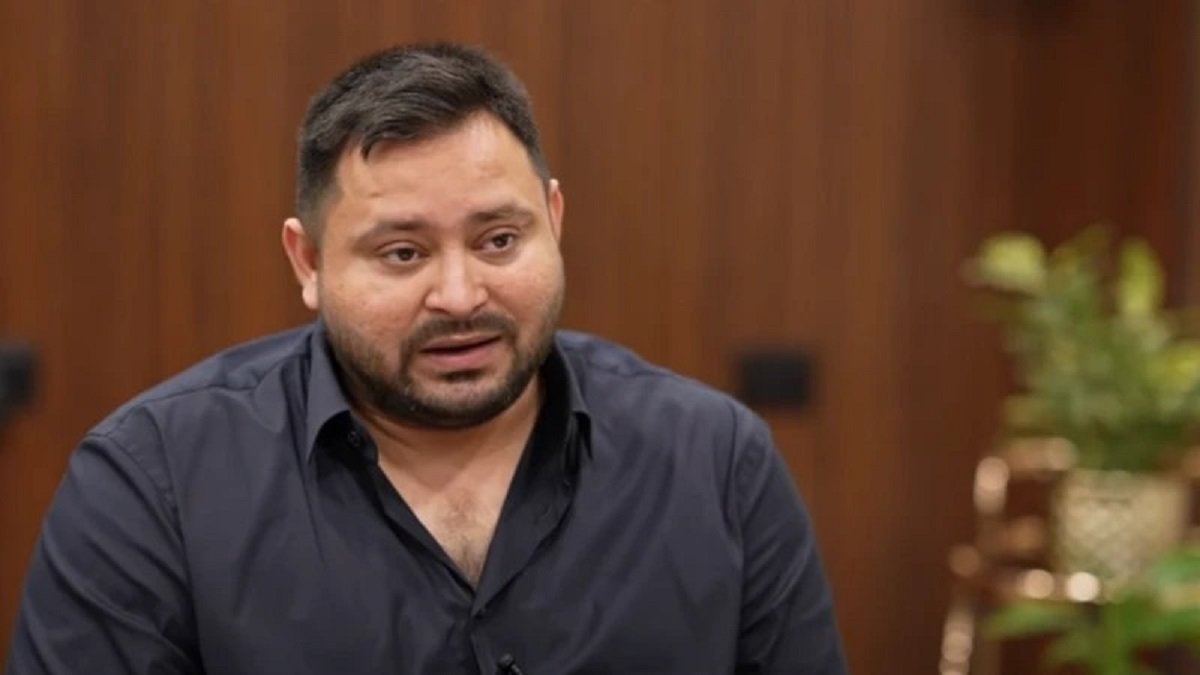
Contents
Bihar, Aug.21,2025: The 130th Constitutional Amendment Bill proposes a sweeping change to Articles 75, 164, and 239AA. It mandates removal of the Prime Minister, Chief Ministers, or any minister—
A Tense Turn in India’s Democracy
Ministers removal bill targets democracy is more than a slogan—it’s a declaration of a seismic move in Indian politics. The Union government has presented the Constitution (130th Amendment) Bill, 2025, igniting heated debate across the country.
With this bill, India’s democratic structure is under scrutiny—defenders of democratic rights see a potential erosion of constitutional checks, while supporters emphasize integrity. Here’s a deep dive into what’s at stake.
What’s in the 130th Amendment?
The 130th Constitutional Amendment Bill proposes a sweeping change to Articles 75, 164, and 239AA. It mandates removal of the Prime Minister, Chief Ministers, or any minister—Central, State, or even Delhi’s—if detained for 30 consecutive days on serious criminal charges (punishable with 5+ years jail). No conviction required.
Removal can happen by constitutional authority—the President for Union Ministers, Governors for state-level ministers. Automatic cessation of office follows if no resignation is tendered. Notably, reappointment is permitted once released.
Union Home Minister Amit Shah tabled the bill on 20 August 2025, citing concerns over political figures allegedly governing from jail and the public’s demand for accountability.
Yadav’s Stark Warning
RJD leader Tejashwi Yadav blasted the bill, stating: “This is a new way to blackmail people… brought only to intimidate Nitish Kumar and Chandrababu Naidu.”
He drew parallels with cases like Hemant Soren and Arvind Kejriwal—those detained then later acquitted—arguing this could be weaponized similarly.
This resonates with the focus: Ministers removal bill targets democracy—a phrase echoing Yadav’s fears that legal tools can be misused for political gains.
Threat to Federalism
Across party lines, critics have railed against the bill:
- MK Stalin (TN CM) labelled it a “Black Bill”—a “Black Day for democracy”—warning that removing elected leaders without trial undermines constitutional morality.
- Mamata Banerjee called it a “draconian step to end democracy,” arguing it centralizes power dangerously and threatens the country’s democratic foundations.
- Adhir Ranjan Chowdhury (Congress) echoed the concerns, calling it politically motivated and a threat to democratic governance.
- TMC MPs added that the bill bypasses federalism and risk central agencies being used to topple state governments.
These voices all underscore the crux: Ministers removal bill targets democracy by suspending due process in favor of central control.
Integrity or Overreach?
Supporters believe the bill closes a constitutional gap, ensuring those facing serious charges don’t lead from behind bars:
- Union Government/PiB Release: Amit Shah argued that the bill brings key officials within the ambit of law—citing recent instances where people governed from jail, which the framers did not envision.
- Prashant Kishor (Jan Suraaj) backed the amendment, saying it discourages governance from jail and fills a lacuna in existing safeguards.
Supporters frame the narrative as an ethical imperative; opponents see it as a political tool. The tension highlights the fragility of democratic trust.
Parliamentary Process: JPC Referral
When introduced in Lok Sabha, the bill sparked uproar. Debates were intense before the bill was referred to a Joint Parliamentary Committee (JPC) for deeper examination.
This procedural move buys time but also signals that legislative scrutiny is underway. Whether changes emerge—strengthening safeguards or altering language—remains to be seen.
Legal and Political Battleground
Looking ahead, the battle over this bill will span multiple arenas:
- Judicial Review: If passed, challengers could take it to the courts, invoking constitutional principle and natural justice.
- State Resilience: Opposition-ruled states will likely mobilize politically and legally to protect governance autonomy.
- Public Sentiment: Civic groups, media, and the public could influence discourse, framing the bill as either necessary reform or authoritarian threat.
Will this rewrite of constitutional norms enhance accountability—or pave the way for misuse? Only time, legal scrutiny, and political outcomes will tell.
Democracy at a Crossroad
In sum, Ministers removal bill targets democracy isn’t just a phrase—it represents a defining moment in India’s constitutional journey.
The 130th Amendment Bill pledges ethical governance and closure of loopholes—but critics warn it could weaponize arrest as political leverage. As Parliament scrutinizes via JPC and courts prepare for potential challenges, the fate of this bill could redefine democratic safeguards for years ahead.

 Festival1 month ago
Festival1 month agoNag Panchami 2025: 7 Key Rituals and Puja Time to Eliminate Kaal Sarpa Dosha

 Festival1 month ago
Festival1 month agoHariyali Teej 2025 Is the Most Beautiful Festival for Women

 Accident3 weeks ago
Accident3 weeks agouttarkashi‑cloudburst‑flash‑flood‑devastation‑4‑dead

 Latest News1 month ago
Latest News1 month agoShocking Political Exit: Anmol Gagan Maan Resigns from AAP and Quits Politics – What’s Next for Punjab?

 Art1 month ago
Art1 month agoSattva, Rajas, Tamas” Come Alive on Canvas – Dr. Renu Shahi’s Indian Philosophical Art Shines in Sri Lanka

 Election2 months ago
Election2 months agoDAV Centenary Public School, Vaishali Nagar, Jaipur Event Report: Talent Hunt Show

 Education1 month ago
Education1 month agoYoung Athletes Shine in Inter-House Kho-Kho Competition (Classes III–V)

 Education2 months ago
Education2 months agoStrong Start to Senior Secondary: Vardhman Srikalyan International School Holds Class 11 Orientation & PTM






























